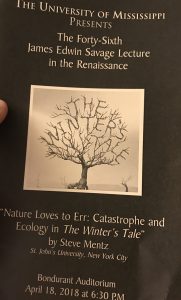 I’m just back from a lovely short trip to Oxford, MS, where I was pleased to deliver the 46th Annual James Edwin Savage Lecture in the Renaissance. My talk, “Nature Loves to Err: Catastrophe and Ecology in The Winter’s Tale” is part of the larger #pluralizetheAnthropocene project that will wind its way into book-shape over the next few months.
I’m just back from a lovely short trip to Oxford, MS, where I was pleased to deliver the 46th Annual James Edwin Savage Lecture in the Renaissance. My talk, “Nature Loves to Err: Catastrophe and Ecology in The Winter’s Tale” is part of the larger #pluralizetheAnthropocene project that will wind its way into book-shape over the next few months.
The trip started with an excursion, navigated by early medievalist Lindy Brady of the English department, to the swirling brown waters of Sardis Lake, a large reservoir carved out of the Little Tallahatchie River. The flood ran high after heavy spring rains, and the beach near the boat launch was completely underwater. Undeterred, we re-directed to a shallow mud-flat where I was able to swim out to a clump of willow trees that I’m told will be high and dry when the floods recede in summer. The water was chilly and silty, though not too cold for a brisk fifteen minute swim. I always love getting to know a new place by way of its open water!
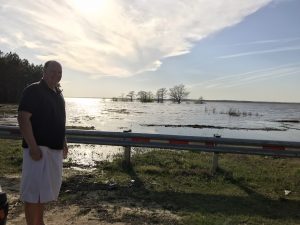
After a dip in Sardis Lake
The University of Mississippi, which brands itself “Ole Miss,” though I came to learn during my visit that the phrase designates a plantation’s mistress as well as the state university, is quite a lovely and hospitable place. On Wed morning before my talk I got up early to swim around 3,000 yards with the Master’s Group at the gorgeous Turner Center on campus. Thanks especially to the coach, Walker Burrow, for pushing me on the sprint sets — which got me ready for a long day before my 6:30 pm talk. My tour of Mississippi included lots of excellent food, a trip to William Faulker’s home Rowan Oak, a ride out to see my host Karen Raber’s home in the nearby country, and several walking trips around campus to the Grove and other landmarks, some of which figure on College Football’s Gameday.
I also saw two identical versions of a controversial statue to the Confederate dead in the Civil War. The one on campus, placed prominently at the center of the old circle, was fronted by a carefully-written plaque detailing the history of the monument, its role during the Civil Rights era, and its controversial meanings now. It seemed fairly well-done, though I still wonder about keeping a monument to Jim Crow in such a place of honor.
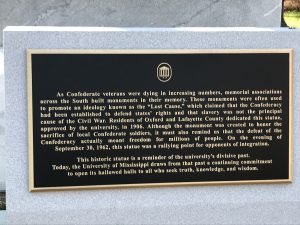
“Contextualization”
The statue in the town square, however, had no contextualizing plaque. Its inscription, presumably done in 1907 when the statue was made, described the cause for which Confederate soldiers died as “holy and just.”
Clearly some cultural and historical work remains to be done in Oxford, among other places in the US.
Just before the talk we had an amusing overlap with a Korean student association event, which had apparently been given the room where I was to lecture for an overlapping time window. They graciously moved the kim chi pancakes part of their event into the hall, though I suspect enthusiastic pancake eating may have competed with my opening minutes on Heraclitus’s “Nature loves to hide.” Does Nature also love to eat pancakes? I suspect so.
We wrapped up the evening with a great dinner with assorted members of the English and History departments. I came away thinking about how humanities departments can be cultural forces in different parts of the country — while also recognizing that not all parts of our nation are eager to to defer to pointy-headed academics. Talking in particular with department chair Ivo

Southern flora
Kamps, who it turns out was a grad student when I was an undergrad at Princeton, and who has been at the University of Mississippi for several decades, I was impressed with the way he imagined the English department as being able to serve both community and University, as well as the way that he argued, sometimes successfully, for the department to receive more resources.
A great visit to the Southland in spring! And now I’m back in cold, drizzly New England —
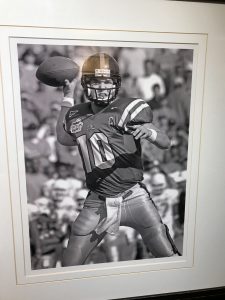
Eli in the hallway of my hotel
Thanks to the English department and University of Mississippi for hosting me!
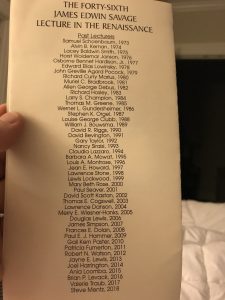
A good list to be a part of